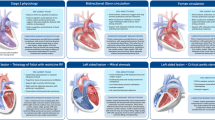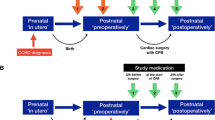Abstract.
Because of advances in surgical and cardiopulmonary bypass techniques it is now possible to definitively repair the vast majority of congenital heart disease in infancy or childhood. Although the majority of survivors do not have obvious cerebral sequelae, there is increasing disquiet about the high incidence of acute neurological events in the immediated postoperative period as well as evidence that at long-term follow-up there are subtle cognitive and motor deficits in many. Some children are more at risk of neurodevelopmental problems, either because of their cardiac (e.g., extensive aortopulmonary collaterals) or cerebrovascular (e.g., the propensity to large vessel dissection) anatomy or because of genetic predisposition (e.g., to prothrombotic disorders). The incidence may vary with the surgery (e.g., the Fontan operation) and the cardiopulmonary bypass technique necessary to achieve an adequate technical repair (e.g., low or no flow at deep hypothermia). Recognition of the population at risk will lead to prevention of serious sequelae. Data collected in adults may be misleading, and many pediatric units have developed their own practice, but recent studies in animal models of child surgery and in children have produced some evidence to guide management to ensure the optimal cerebral as well as cardiac outcome. Pump flow should be maintained at least 30 ml/kg/min where possible, with inotropic support to maintain blood pressure if necessary. If pump flow must be lowered or circulatory arrest is essential, thorough cerebral cooling to deep hypothermic temperatures is mandatory; a pH-stat strategy may make this easier, but an α-stat strategy may be better in those operations that can be performed at moderate hypothermia. There is no evidence that the available pulsatile pumps offer an advantage. Tissue oxygenation may reach critical levels and a high hematocrit and oxygen tension may reduce the risk of significant hypoxia. There is a risk of embolization in children, which can be reduced with membrane oxygenators and careful monitoring; the role of arterial filtration remains controversial. The only protective agent that can currently be recommended is methylprednisolone to protect the spinal cord (e.g., in operations on the aortic arch). Further studies are needed in this important area.
Similar content being viewed by others
Author information
Authors and Affiliations
Rights and permissions
About this article
Cite this article
Kirkham, F. Recognition and Prevention of Neurological Complications in Pediatric Cardiac Surgery. Pediatr Cardiol 19, 331–345 (1998). https://doi.org/10.1007/s002469900318
Published:
Issue Date:
DOI: https://doi.org/10.1007/s002469900318




